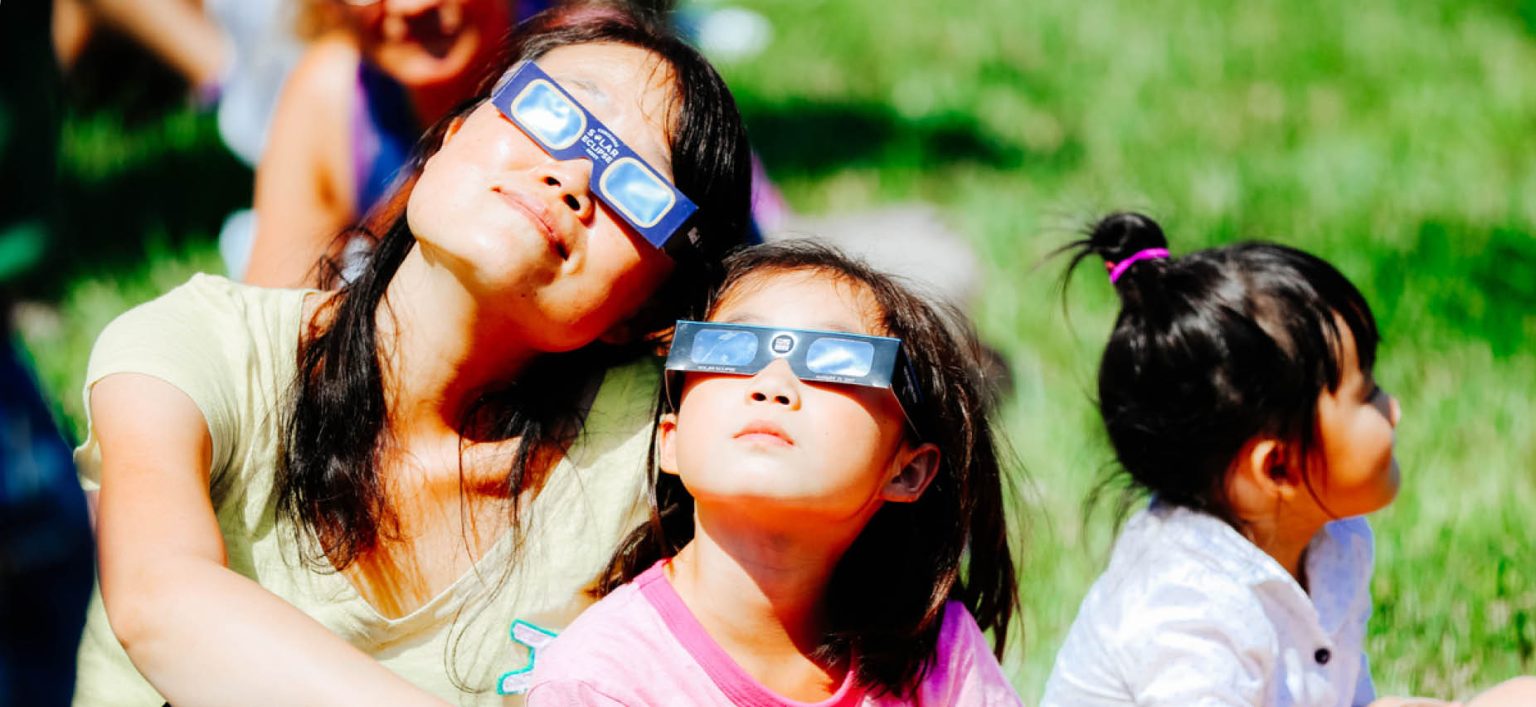Next month, a solar eclipse is set to captivate skywatchers around the country as the moon passes between Earth and the sun – and parts of Central New York (including Syracuse) will be in the path of totality. If you’re looking for some kid-friendly places to observe the eclipse (and to learn more about it), take a look at this list:
Museum of Science and Technology (MOST)
The museum will host a Solar Eclipse Festival on its east lawn with tabling activities and food trucks. Families can snag some complimentary glasses too – while supplies last.
Where: 500 S. Franklin St., Armory Square, Syracuse.
When: Monday, April 8 from noon-4 p.m.
More information: most.org/solareclipse2024.
NBT Bank Stadium
Held by the Syracuse Mets and Visit Syracuse, Total Eclipse of the Park will feature live entertainment and food specials, and conclude with a game against the Worcester Red Sox. Plus, if you are one of the first 10,000 attendees, you will get a pair of eclipse glasses.
Where: 1 Tex Simone Drive, Syracuse.
When: Monday, April 8 beginning at 2:30 p.m.
More information: milb.com/Syracuse.
Rice Creek Field Station
Families will be able to view the sun through a telescope during all phases of the eclipse. There will also be a station where children can create their own pinhole viewers and chalk art.
Where: SUNY Oswego, Thompson Road, Oswego.
When: Monday, April 8 from 9 a.m.-4:35 p.m.
More information: calendar.oswego.edu.
Sciencenter
Head to the Sciencenter for two days of eclipse-themed events, then join its staff at Fair Haven Beach State Park on the day of the phenomenon to learn about the reasons behind it and make a miniature solar system.
Where: 601 1st St., Ithaca.
When: Saturday, April 6 from 10 a.m.-5 p.m.; Sunday, April 7 from 10a.m.-5 p.m.; and Monday, April 8 from noon-4:30 p.m.
More information: sciencenter.org/solar-eclipse-programming.
Eye Safety for Total Solar Eclipses
Here are some important safety guidelines to follow during a total solar eclipse.
- View the Sun through eclipse glasses or a handheld solar viewer during the partial eclipse phases before and after totality.
- You can view the eclipse directly without proper eye protection only when the Moon completely obscures the Sun’s bright face – during the brief and spectacular period known as totality. (You’ll know it’s safe when you can no longer see any part of the Sun through eclipse glasses or a solar viewer.)
- As soon as you see even a little bit of the bright Sun reappear after totality, immediately put your eclipse glasses back on or use a handheld solar viewer to look at the Sun.
Source: NASA
For more community news, visit communityguide.familytimescny.com/article.
To submit a news item, email courtneyk@familytimescny.com.





